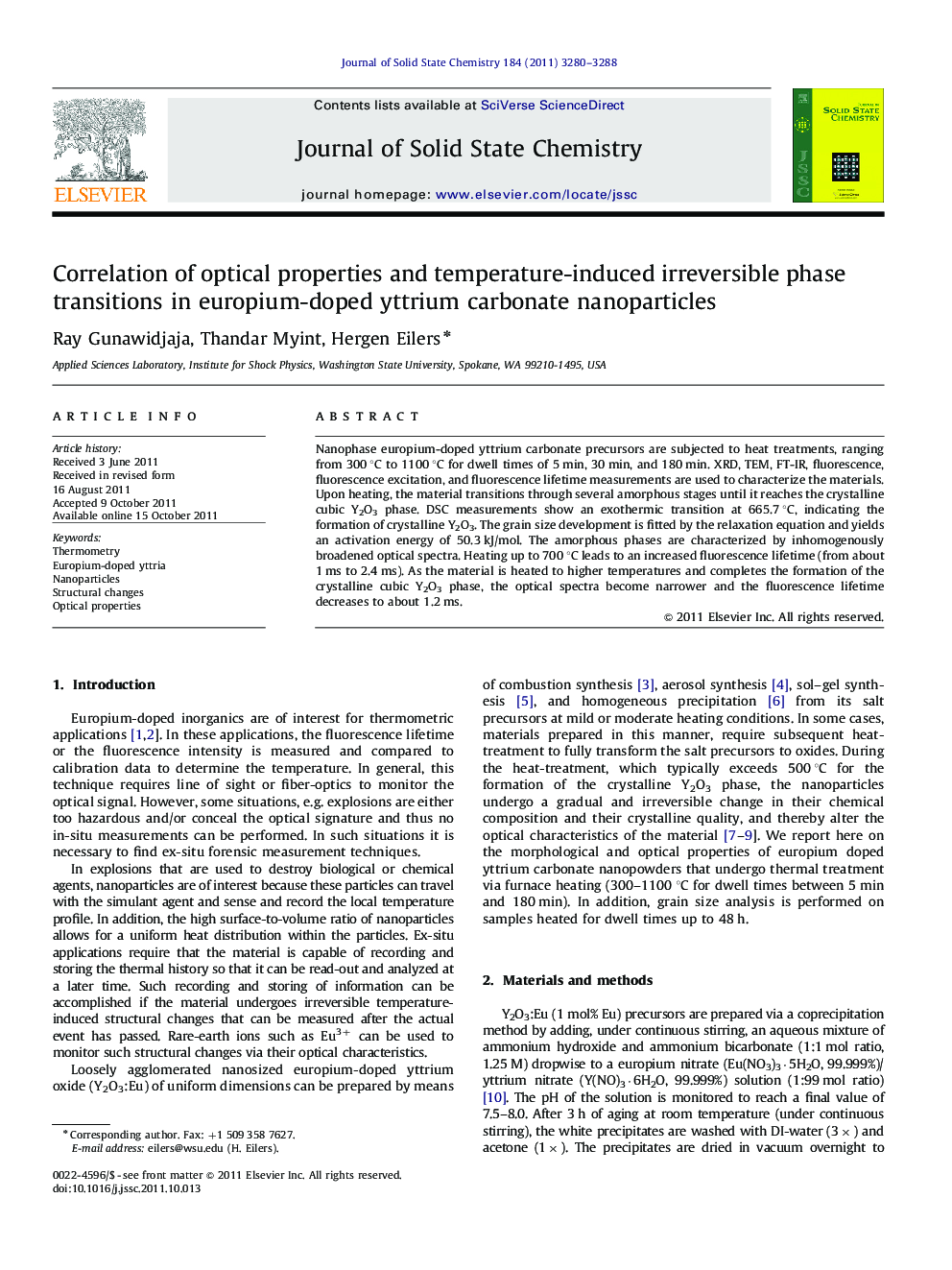| Article ID | Journal | Published Year | Pages | File Type |
|---|---|---|---|---|
| 1330539 | Journal of Solid State Chemistry | 2011 | 9 Pages |
Nanophase europium-doped yttrium carbonate precursors are subjected to heat treatments, ranging from 300 °C to 1100 °C for dwell times of 5 min, 30 min, and 180 min. XRD, TEM, FT-IR, fluorescence, fluorescence excitation, and fluorescence lifetime measurements are used to characterize the materials. Upon heating, the material transitions through several amorphous stages until it reaches the crystalline cubic Y2O3 phase. DSC measurements show an exothermic transition at 665.7 °C, indicating the formation of crystalline Y2O3. The grain size development is fitted by the relaxation equation and yields an activation energy of 50.3 kJ/mol. The amorphous phases are characterized by inhomogenously broadened optical spectra. Heating up to 700 °C leads to an increased fluorescence lifetime (from about 1 ms to 2.4 ms). As the material is heated to higher temperatures and completes the formation of the crystalline cubic Y2O3 phase, the optical spectra become narrower and the fluorescence lifetime decreases to about 1.2 ms.
Graphical abstractFluorescence lifetimes of Eu-doped Y2O3 precursors heated for 5, 30, and 180 min to various temperatures.Figure optionsDownload full-size imageDownload as PowerPoint slideHighlights► Irreversible phase transitions in nanoparticles are of interest for thermometry. ► Eu-doped nanophase yttrium carbonate precursors were heat-treated. ► The material undergoes decomposition and crystallization. ► Morphological and optical properties are measured. ► Optical properties can be used to deduce the temperature.
